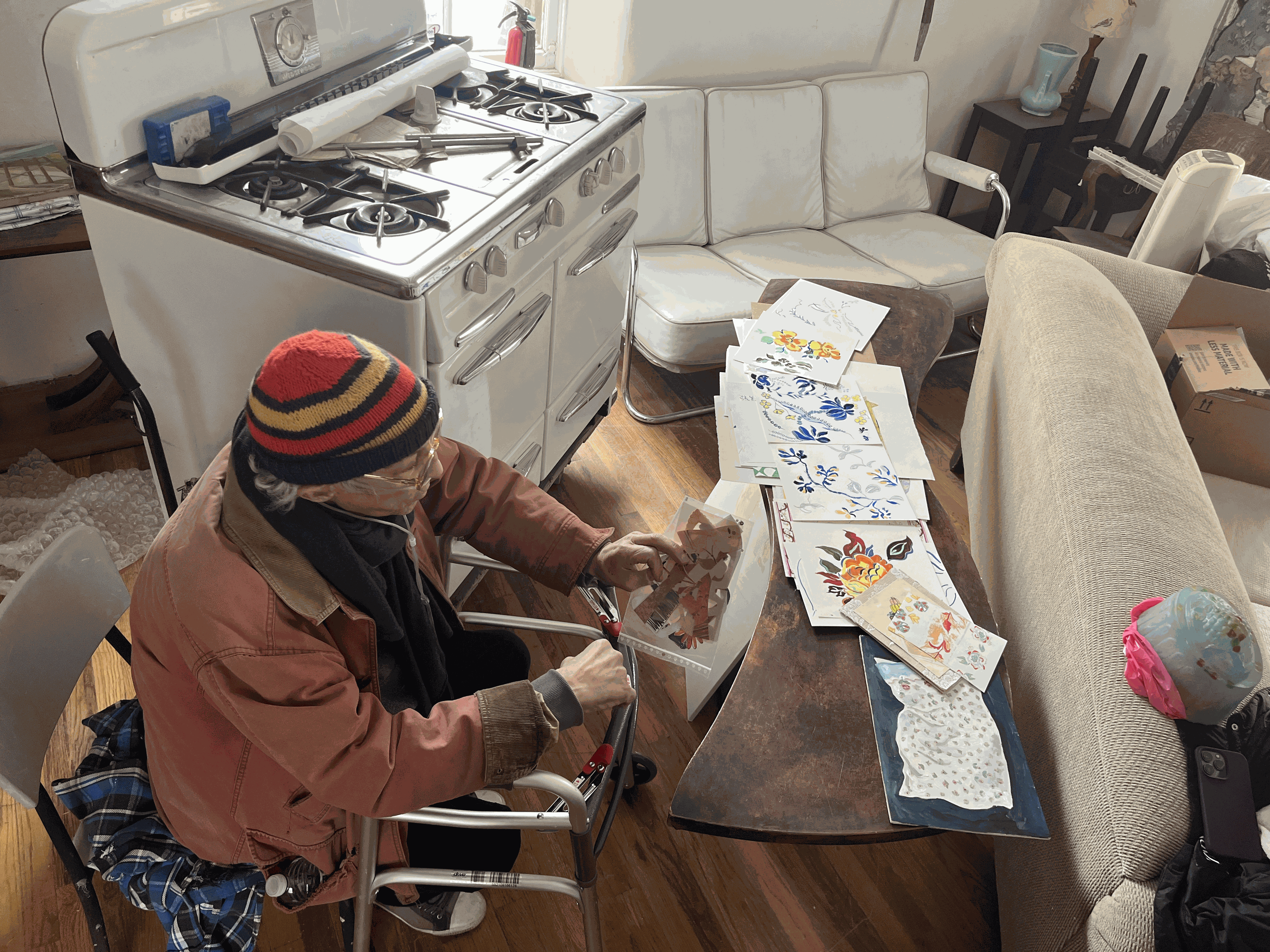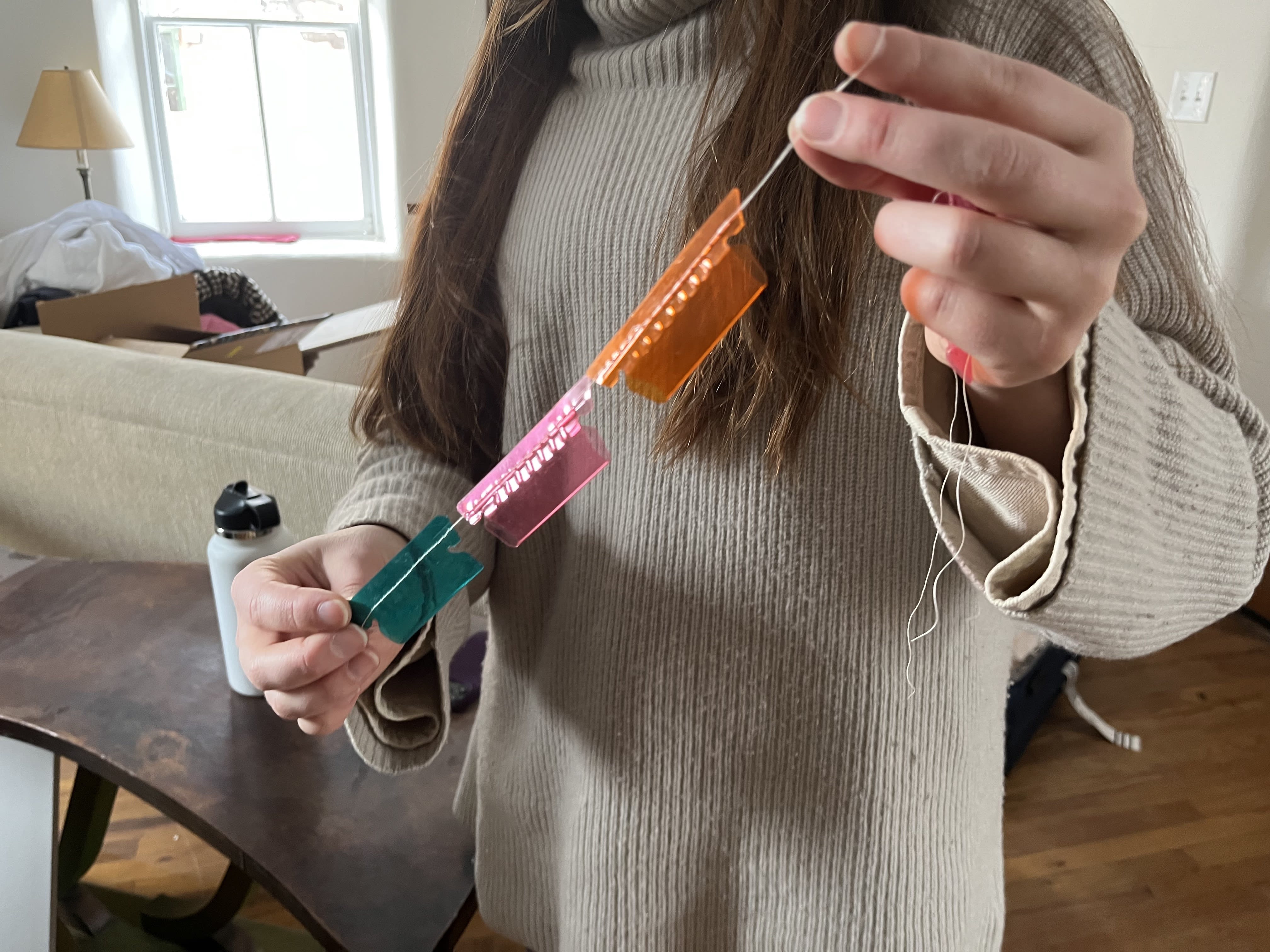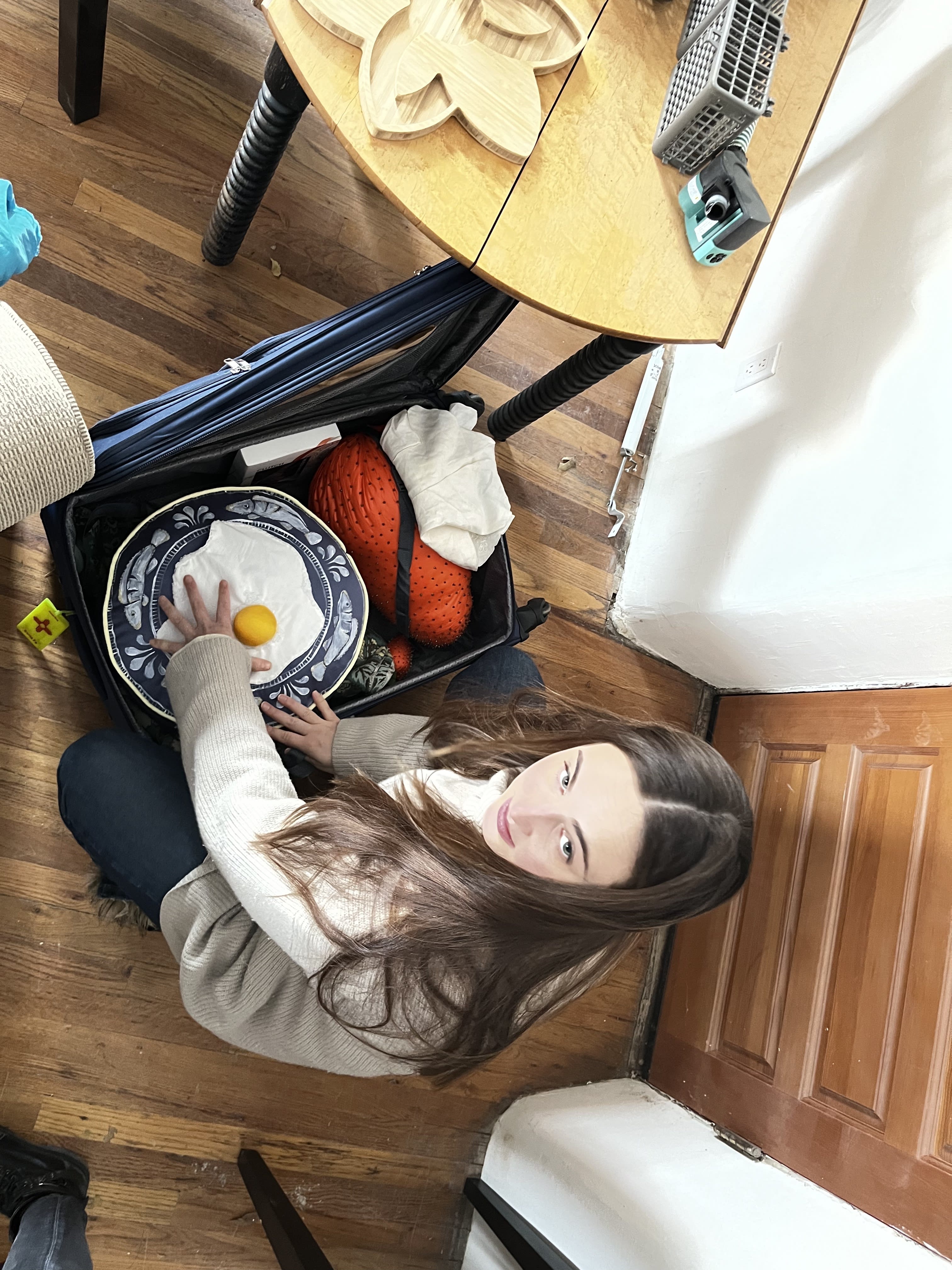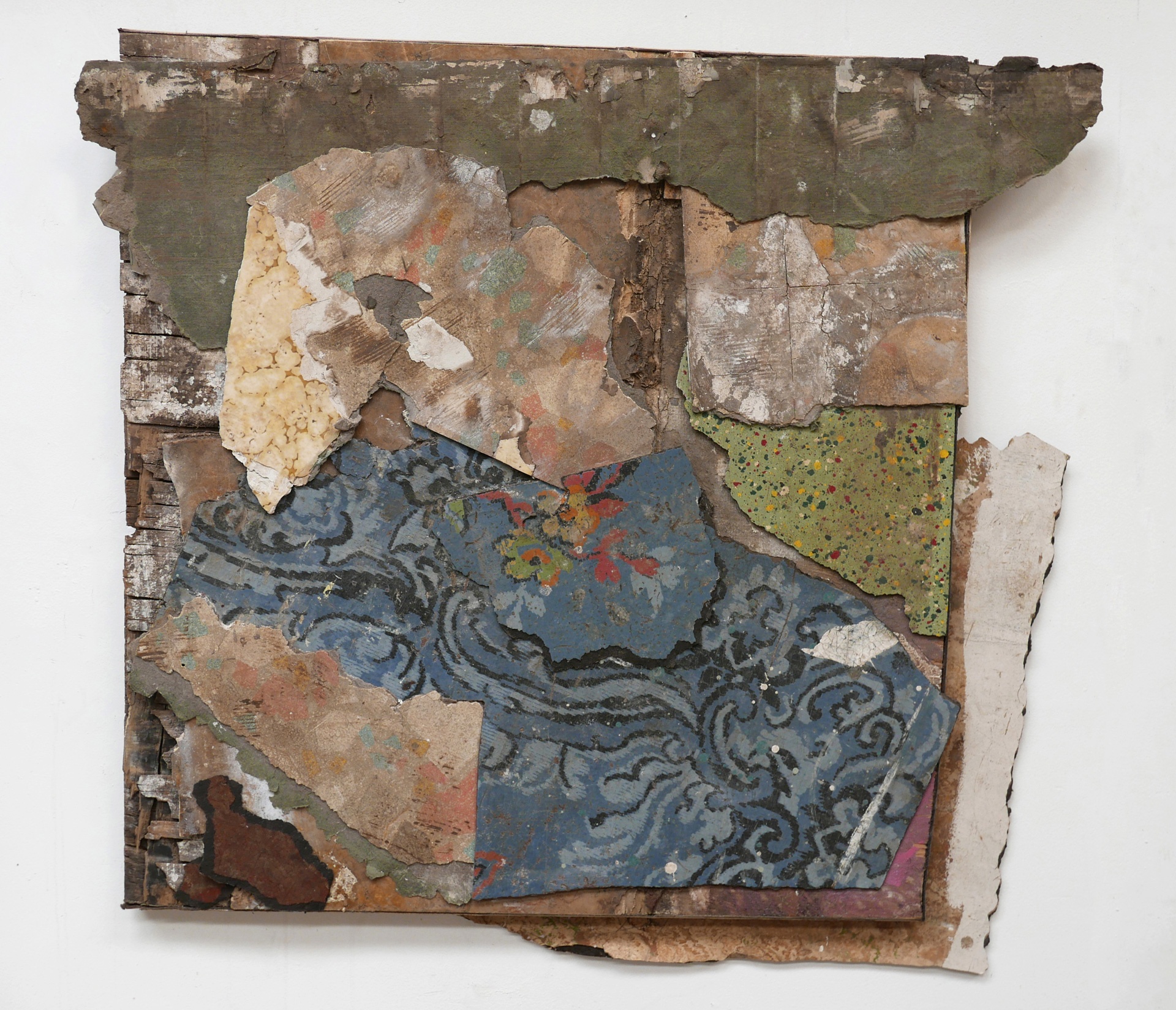
In late January, form & concept Gallery Director Jordan Eddy conducted a final interview with father, sculptor, painter, metalworker, handyman, and general doer Tom Osgood about his upcoming show with his daughter and fellow artist Ravenna Osgood. The show, Our Place: to the moon and back on a rocket ship from Rome features a selection of Tom and Ravenna’s works, including sculptures, design objects, illustrations, and found object assemblages.
Joined by his wife Deeda and daughter Ravenna (his son, Grayson, was in transit to Santa Fe), Tom discusses his process, what keeps him motivated, and his hopes for his daughter’s artistic career. Conducted in the partly renovated adobe home in Santa Fe where Tom unearthed many of the materials that comprise the assemblages in the exhibition, this strikingly casual interview showcases Tom’s playful but rigorous process, wisdom from a lifetime of making, and enduring love for his family.
Jordan Eddy: Tom, your recent work showcases mixed media pieces crafted from home renovation debris. It seems as though your creative output hasn't slowed down or shrunk in scale. What motivates you to continue these large-scale projects despite your cancer diagnosis and age?

Some of Tom Osgood’s found object sculptural works crafted from leftover material from a home renovation project.
Tom Osgood: The fun part of it has always been motivated by curiosity, always. The latter half of this project, the tail end of everything, was just: “Get it done.” I didn’t plan on COVID. I was going to have a crew in here. I was going to demo it all out—Well, COVID hit. I couldn't bring a crew on. I was working by myself. I was, unbeknownst to me, probably already sick by then. I’d come home every day and Deeda would go, “How's it going?” And I’d say, “slow.” I’m so slow; I should call myself “Poke-a-long Construction.”
And then the art part of the project was that I just do art. I would have done this no matter what, whether the gallery was interested or not — just going, I'm just that type. I'm going. I’ve been making art in my bed everyday, nothing to write home about, just playing with 2-D color because that’s how I am: making is what I do.
I just love to do art, you know? I don’t know whether it's good or bad or indifferent. I think most people or creators are like that. You just do it because you're doing it.

Tom Osgood, pictured here in his characteristic colorful clothing, admiring his daughter Ravenna’s work.
JE: This series of found object works is different from anything you’ve done before. Did it teach you something about yourself or about yourself as an artist?
Yes, specifically, keep your eyes open to what the possibilities are. I think to give a piece worth, you have to learn it, to care enough about your point of view that you feel compelled to share it with someone.
– Tom Osgood

Ravenna Osgood shows some of her concept sketches for the exhibition.
JE: You light up whenever you’re talking about your daughter Ravenna. who is also an artist. What similarities do you see between the two of you?
TO: We both love it.
Ravenna Osgood: It’s an escape for us as well. When I'm creating, that’s the closest to being near him when I’m far away. I know creating is his outlet, and I can relate. You’re just so in what you’re doing that the rest falls into the background.
TO: One thing I notice is that Ravenna’s work and the work at form & concept is much more narrative-oriented than my work — another crossover is, anything that’s around me, I’ll look at it and after a while, it will come to mind as an art piece. I’ll say, “How would I incorporate that into what I’m doing?” Like for the barrel of tabs we bought in Los Alamos for Ravenna’s recycled fashion show: I’ll see those and say, “I like those; I see lots of possibilities for those.” But then I’d say, “Ah, watch out, don’t go there. That’s someone else’s piece. But I’d go there, then back off, go there again in my brain, then back off… and finally I just said, “Screw it, she leaves everything lying around here.”
RO: I’m really good at collecting stuff. [laughs]

Keeping the found object art legacy in the family, Ravenna Osgood shows off some file tabs Tom collected that will become a sculptural installation.
JE: The file folder piece really embodies the theme of the show, filing something away for someone else to find or having a shared creative space, or another world where you can connect. Ravenna, you came up with the name of the show: Our Place: to the moon and back on a rocket ship from Rome. Could you tell us a little bit about the title and theme of the show?
RO: I was really thinking about art as a place that Dad and I share, as another realm that we both inhabit, a shared feeling. And because Dad isn’t so long for this world, I was thinking of art as a forever space, regardless of mortality; I was thinking of art as a space where we can always find each other. And a lot of this work revolves around the domestic space, and because of that, both the domestic motifs and the cohabitation of this other space that is art, we came up with the name: Our Place.
And Rome is another one of our places. The city has layers, historical ruins jutted up against new architecture—some of my work also references Roman antiquities, so in that sense we are referencing the past, another dimension that we both share and is captured in our artistic process. And “to the moon and back" is what Dad and I have always said to each other.” So the whole name stems from a desire to capture all the layers of our relationship, from feelings, to the places and interests we share, to our conversations, to our mediums and conceptual motivations.
TO: I mean “to the moon and back,” that’s from going to bed every night: Love. "I love you to the moon and back." And in the sense of the art, I definitely, definitely, think of art, and what we do, as an archeological dig. In the context of the show, you’re digging within yourself, digging into your emotions, and into a physical space. And I always think of art that way, as a dig. And I think Ravenna does, too, to a degree. So in that sense, the title was pretty easy.
As for Rome, that’s a very family-oriented thing. All of us, have had inculcated into them, one way or another, whether they like it or not, a love for Rome and that part of the world, which in a sense is a “dig” into another culture, another history.

The Osgoods' living room, one of the spaces Tom and Ravenna share—not exactly Rome, but layered in colorful history nonetheless.
JE: Speaking of histories, are there specific histories or stories you'd like to share about individual artworks? I’m wondering about the piece with your old boots.
TO: That’s my self portrait. Those are the shoes I was wearing when I was redoing this place. They’re so beat up and torn apart… I was at a restaurant in Albuquerque, El Pinto, and the man next to me in line looks over and asks, “Are you a construction worker?” And I said, “No, I'm not. Why?” And he says, “'cause those shoes of yours, those shoes are pretty beat up.”
I start laughing to myself because I’m such a slob in general. I took the boots out of my wardrobe. I said, “I’m gonna make a self portrait out of these.” And that’s how they came to be.
Deeda Osgood: What's cool is he originally got those boots in black but who knows what happened to them. So then he ordered a beige pair, but he did not like the color, so he dyed them oxblood red. He has those skills because he used to work in a shoe repair shop.
RO: You always wore those boots.
TO: And they evolved. They went from being really cool. And then they became that… but they became my self-portrait by virtue of customizing them. And the fact that I incorporated things from my shop into the piece, like the beat-up brush, and the repurposed coffee mug.

Self Portrait, perfectly broken in and well-loved, Tom’s boots charmingly represent the artist’s work ethic, dedication, and curious eye.
JE: Tom, Ravenna could go in so many different directions with her artistic career. What do you hope for her?
TO: I have a really good, specific answer for that. Ravenna was moaning and groaning about how galleries will hit you with this or that, what you’re supposed to be... pigeonhole you. And this fall I said, I can help you a lot with how to excel in specific areas of your craft, but you have to consider your process and where you live. First of all, Europe is a construct you have to exist within; Their laws, taxes, boundaries, customs, municipalities they’re limitations. So, there’s that. [Ravenna lives in Amsterdam.]
But also, Ravenna, you are a person who does many things in many ways. And that’s not necessarily what people, the tax world, or the art world wants. Nevertheless, it could be your strength. Your strength is that you speak more than one language, that you can dovetail into all these different modalities.
I think that’s her strength. I think she can learn and draw from all these different things that she does. Is that an easy path? Not necessarily. But I think it would be great for her—That’s my take on it: turn the very things that are considered weaknesses by the art industry into strengths.
RO: I really want to do everything.

Ravenna unpacking her mixed-media fabric pieces fragola peluche and un uovo fritto su un vecchio piatto di pesce; who says you can’t create and travel?
JE: I was going to ask, Ravenna, is there anything you’ve learned from your dad that might help shape the path you pursue?
RO: The way my Dad has shaped his life has really influenced me; he always made time for creation and family. He always made time to do his artwork, even if he wasn’t necessarily making a living from the artwork itself.
He has mentioned that sometimes he didn’t want to go on all of these family holidays because he wanted to be selfish and do his artwork, which resonated with me because sometimes I struggle with balancing wanting to do everything, see everyone, and creating. But he has shown me it’s possible to balance all of it if you take an alternative approach; He’s living proof of that.
Meet me at the moon.
Forever to the moon and back.
Our place is not concrete.
Our ephemeral space.
Our place between here and the moon. Eternal living room.
-Ravenna Osgood
Tom Osgood passed away in the early hours of January 24, 2023, three days after this interview was conducted. We extend our condolences to the Osgood family and thank them for letting us conduct this interview.
Come celebrate Tom’s life and Ravenna’s future on April 28 from 5-7 pm at the opening of Our Place: to the moon and back on a rocket ship from Rome at form & concept. Below are some of Tom's final works, which will enmesh with new works by Ravenna in the immersive installation.

Tom Osgood, Layers, 2020, excavated mixed media

Tom Osgood, Home and Motel, 2021, excavated mixed media

Tom Osgood, Little Bit, 2020, excavated mixed media

Tom Osgood, Joined, 2020, excavated mixed media

Tom Osgood, Countered, 2020, excavated mixed media

Tom Osgood, Mapped, 2020, excavated mixed media